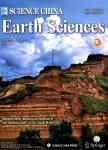Formation mechanism of condensates, waxy and heavy oils in the southern margin of Junggar Basin, NW China
Formation mechanism of condensates, waxy and heavy oils in the southern margin of Junggar Basin, NW China作者机构:PetroChina Research Institute of Petroleum Exploration and DevelopmentPetroChinaBeijing 100083China State Key Laboratory of Enhanced Oil RecoveryBeijing 100083China Key Laboratory of Petroleum Geochemistry of CNPCBeijing 100083China PetroChina Xinjiang Oilfield CompanyKaramay 834000China Department of Earth SciencesZhejiang UniversityHangzhou 310027China
出 版 物:《Science China Earth Sciences》 (中国科学(地球科学英文版))
年 卷 期:2017年第60卷第5期
页 面:972-991页
核心收录:
学科分类:081803[工学-地质工程] 08[工学] 0708[理学-地球物理学] 0818[工学-地质资源与地质工程] 0704[理学-天文学]
基 金:supported by the PetroChina Science and Technology Special Projects (Grant Nos. 06-10A-01-02 2011A-0201 2014A-0211 and 2016A-0202)
主 题:准葛尔盆地 中国西北 凝聚体 重油 烃源岩成熟度 地球化学过程 正构烷烃分布 物理化学特征
摘 要:It is a challenge to determine the source and genetic relationship of condensate, waxy and heavy oils in one given complicated petroliferous area, where developed multiple sets of source rocks with different maturity and various chemical *** central part of southern margin of Junggar Basin, NW China is such an example where there are condensates, light oils, normal density oils, heavy crude oils and natural gases. The formation mechanism of condensates has been seriously debated for long time;however, no study has integrated it with genetic types of waxy and heavy oils. Taking the central part of southern margin of Junggar Basin as a case, this study employs geological and geochemical methods to determine the formation mechanism of condensates,waxy and heavy oils in a complicated petroliferous area, and reveals the causes and geochemical processes of the co-occurrence of different types of crude oils in this region. Based on detailed geochemical analyses of more than 40 normal crude oils, light oils,condensates and heavy oils, it is found that the condensates are dominated by low carbon number n-alkanes and enriched in light naphthenics and aromatic hydrocarbons. Heptane values of these condensates range from 19% to 21%, isoheptane values from1.9 to 2.1, and toluene/n-heptane ratios from 1.5 to 2.0. The distribution of n-alkanes in the condensates presents a mirror image with high density waxy crude oils and heavy oils. Combined with the oil and gas-source correlations of the crude oils, condensates and natural gas, it is found that the condensates are product of evaporative fractionation and/or phase-controlled fractionation of reservoir crude oils which were derived from mature Cretaceous lacustrine source rocks in the relatively early stage. The waxy oils are the intermediate products of evaporative fractionation and/or phase-controlled fractionation of reservoir crude oils, while the heavy oils are in-situ residuals. Therefore, evaporative fractionation



